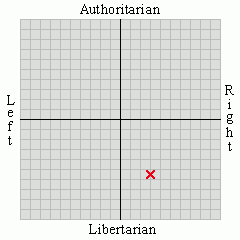 Antoine Laurent Lavoisier is best known as the father of modern chemistry. This picture of him and his wife Marie-Anne, a full-size print of the original (which can be found at the Met) graces the wall of my living room. I've been asked about the portrait, which is a striking picture of an obviously wealthy and obviously love-struck couple. Some people think they are George and Martha Washington, and I must admit some ignorance about the subject of the painting myself. Today I found an opportunity to remedy that.
Antoine Laurent Lavoisier is best known as the father of modern chemistry. This picture of him and his wife Marie-Anne, a full-size print of the original (which can be found at the Met) graces the wall of my living room. I've been asked about the portrait, which is a striking picture of an obviously wealthy and obviously love-struck couple. Some people think they are George and Martha Washington, and I must admit some ignorance about the subject of the painting myself. Today I found an opportunity to remedy that.The child of wealthy parents, Lavoisier obtained a law degree at age 23, just as I did. But his great love was science, and his initial pursuits in that path of life were in geology. By studying oil and gases emitted from various rocks, he determined how to improve the quality of street lighting, and his gas-lamp system became used all over the European and North American world. We have street lights today because of him.
As he came into his own fortune, he invested in a tax-farming company, which would ultimately prove his undoing. But during his lifetime, he used his considerable wealth, and the assistance of his young, clever, and beautiful wife (who served as his engraver and his English translator) to assemble a group of brilliant young scientists, devoted the proceeds of his commission from the National Gunpowder Laboratory to create another chemistry laboratory at home, and formed his own salon concerned with the study and application of chemistry. He also determined that all substances have chemical compounds, which in turn are made of basic elements. For instance, his experiments showed that water condenses out of free oxygen and free hydrogen in the air when temperature and air pressure conditions are right, and thus figured out that hydrogen and oxygen are the components of water. He created a solar-powered combustion engine, devised a means of determining the caloric content of food still used today, and proved that living creatures use oxygen as part of their respiration and survival. New ways of purifying food, inexpensive artificial dyes, and the foundations of what would become the iron long and other artificial respirators came out of Lavoisier's fashionable Paris home.
He was politically liberal for his day, despite his wealth and association with the unpopular tax-farming companies used by the King to support the state. He was an advocate of monetary reform and structured tax relief, and a deputy to the Estates-General that launched the Tennis Court Revolution. He urged his fellow upper-classmen to adopt policies of moderation and accomodation with the plight of the working classes.
His efforts were in vain. The wealthy and the noble rejected him as untrue to his roots and a sympathizer with the rabble. (In today's terms, he would have been sneered at as a RINO.)
But when le merde hit le fan, he fared no better at the hands of the madmen who took over. More concerned with ideological purity and making bold political statements, he was charged with treason for participating in the tax farming company. When it was pointed out that he possessed a unique and valuable scientific mind, the likes of which would not be found again for a hundred years, the judge replied that the French Republic did not need chemists or scientists, it needed swift justice against "traitors" like tax collectors, something which Lavoisier had been. He never saw his fifty-first birthday.
Eighteen months after separating his head from his body and snuffing out one of the brightest lights of France's intellectual galaxy, the government exonerated him of treason and sent his wife some of his possessions back along with a note acknowledging the wrongful conviction. Cold comfort indeed. Despite falling into bankruptcy and depression following her husband's death (her father was executed the same day as Lavoisier) she found the money to repurchase the rest of his notes and laboratory equipment. Her second marriage to an English nobleman was brief and unhappy; she insisted on retaining the name Lavoisier in devotion to her dead husband and I can see how that must have grated on the guy.
Marie-Anne sent Lavoisier's collection to scientists in the United States, where she believed they could help foster her beloved Antoine's intellectual and scientific spirit. One cannot help but think that Lavoisier admired the new United States and the manner in which it implemented moderate republican government without bloodshed; I think Marie-Anne chose very well to send the tools of her husband's legacy here. The bulk of Lavoisier's laboratory is now on display at Cornell University.
Today is the two hundred and fourteenth anniversary of Lavoisier's execution, an act of profound waste on the part of bloodthirsty political extremists. He was a man devoted to political moderation and scientific inquiry and one of the bright lights of his age. Now that I've learned a little more about him, I'm happier than I ever was that I have his portrait -- a portrait which includes his remarkable wife -- in my home.







No comments:
Post a Comment